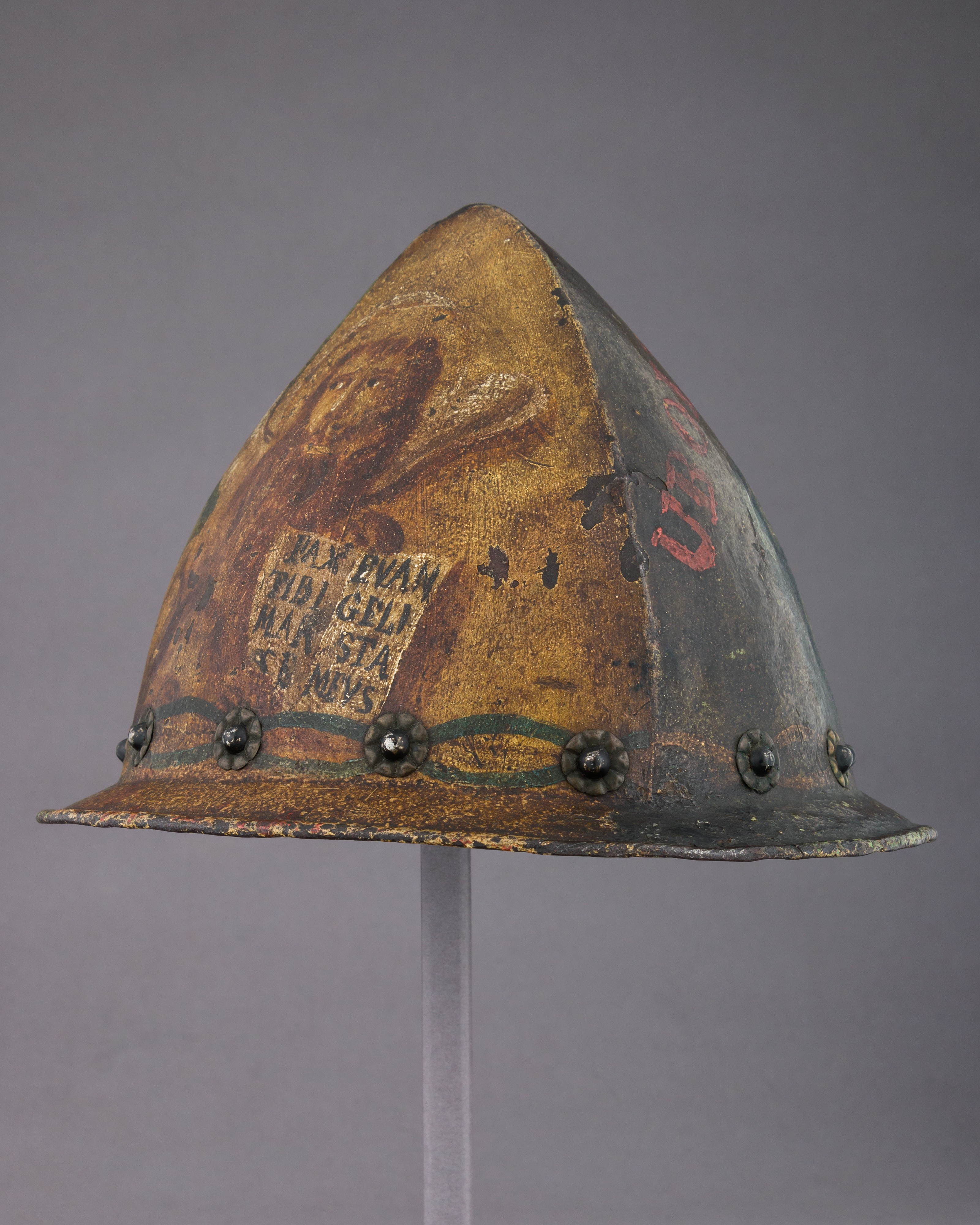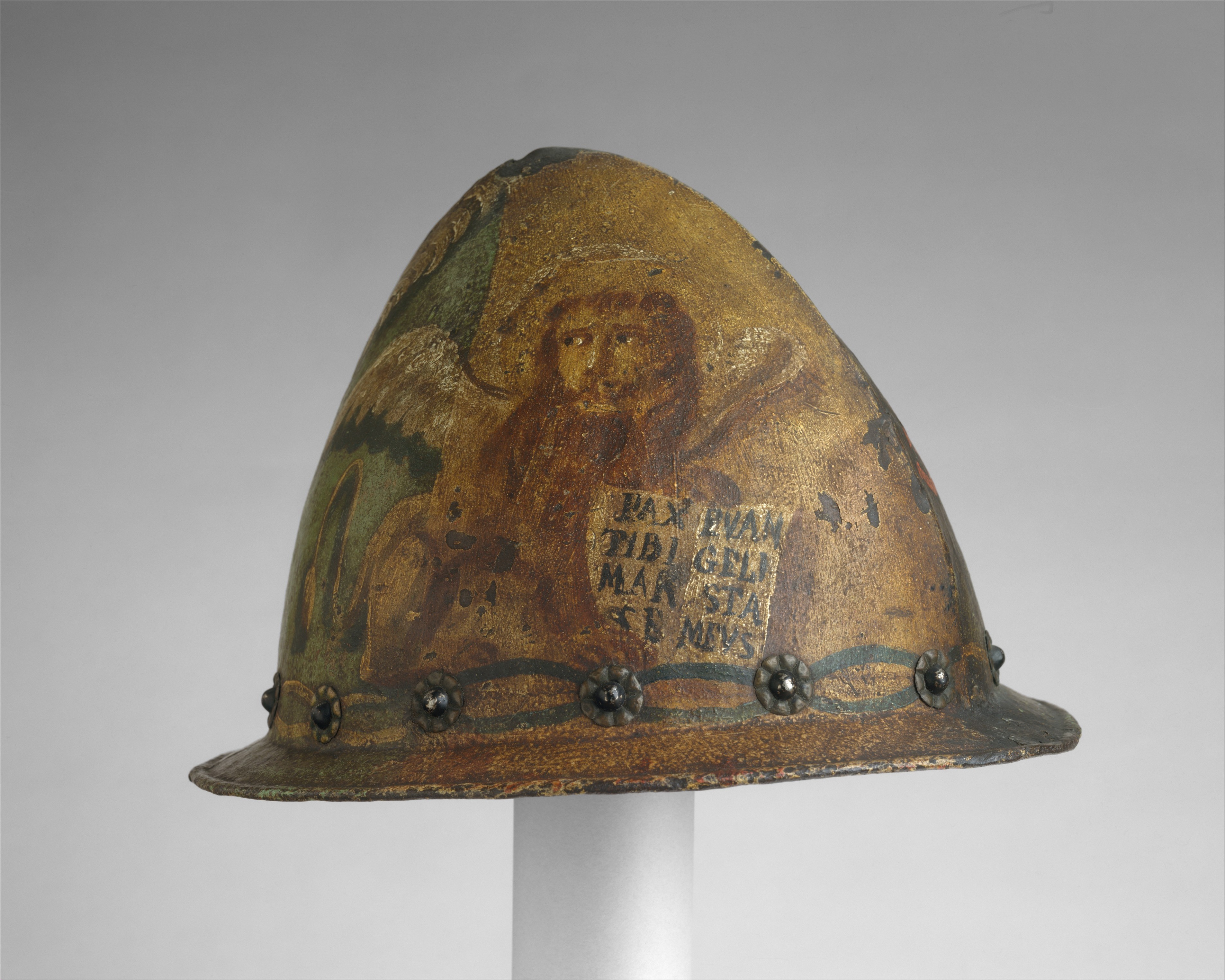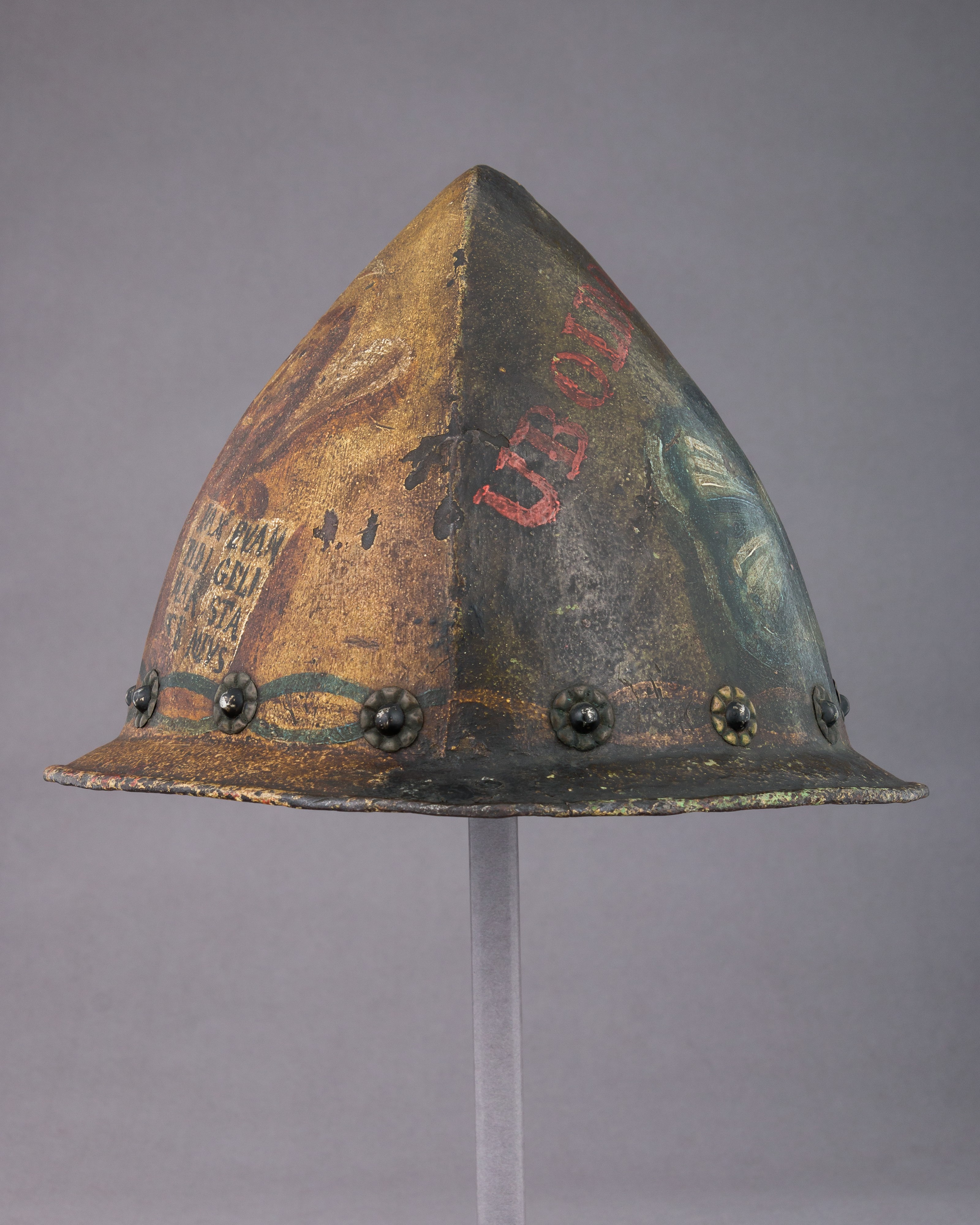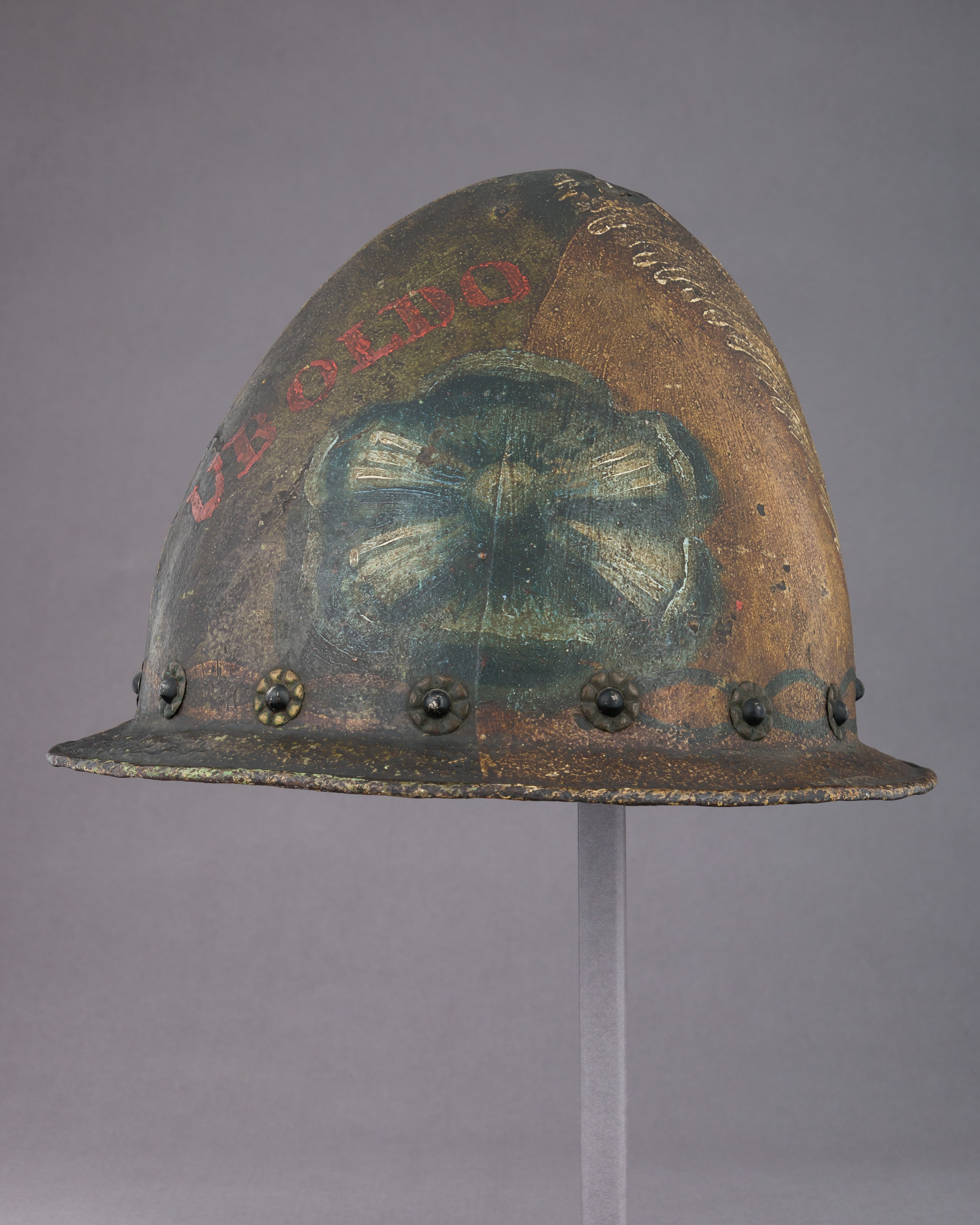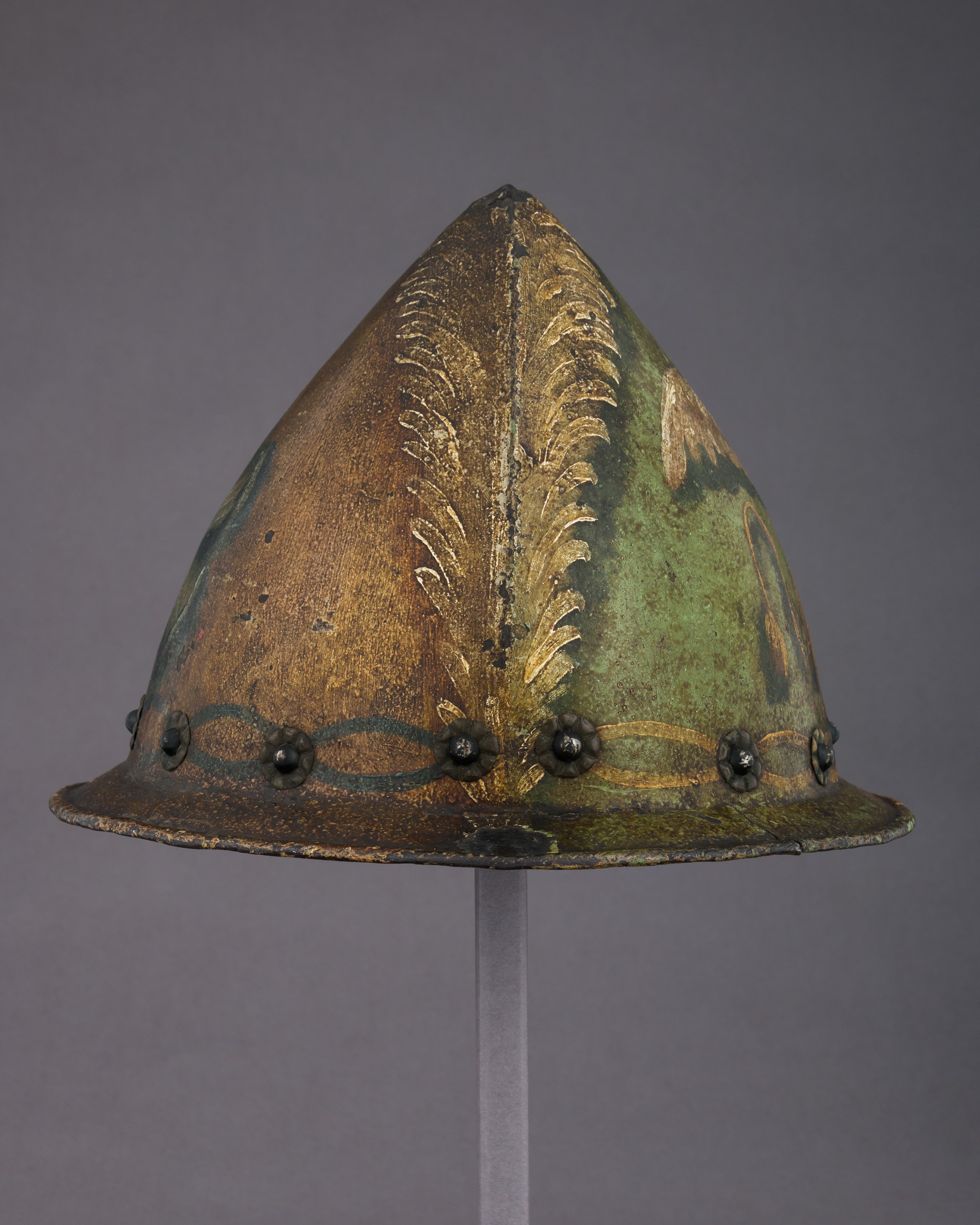Cabasset
Not on view
The core of the New Testament is the story of Jesus as told in the Gospels (literally, "good news") written in the first century by Saints Matthew, Mark, Luke, and John, who are known collectively as the Four Evangelists. Matthew is often represented as a winged man, Mark as a winged lion, Luke as a winged ox, and John as an eagle, symbolism derived from the visionary imagery described by the prophet Ezekiel in the Old Testament (Ezekiel 1:4–11). The Evangelists were venerated not only as the writers of the Golspels but also as important patron saints. It is in the latter role, specifically as patron saints of the Republic of Venice, that the painted image of the winged Lion of Saint Mark appears on this late-sixteenth- or early-seventeenth-century helmet.
Mark (d. ca. 74 A.D.) was an early follower of Jesus and is recorded as having accompanied both Saint Paul and Saint Peter on missions to spread Christianity in the Near East and Italy. He was most closely associated with Peter, the foremost disciple of Jesus, and is said to have served as his interpreter, translating his sermons from Hebrew into Greek and Latin. The Gospel of Mark is thought to be based on Peter's own recollections of the life of Jesus. Mark is traditionally regarded as the founder and first bishop of the Christian community in Alexandria, which is considered the site of his martyrdom. There his remains were cherished as holy relics until the early ninth century, when they were brought to Venice and interred in a new cathedral bearing his name. According to Venetian legend, Mark was returning to Rome from Aquileia at the request of Saint Paul when his ship was forced by a storm to seek shelter amid the lagoons and islands that would later be the site of Venice. In a dream he was visited by an angel who told him of his future martyrdom; the angel also prophesied that a great city would be founded where he was marooned and that its people would one day rescue his remains from the infidels and bring them to their city, where he would be forever honored.
The use of the winged lion to symbolize Mark dates from at least as early as the fifth century. The depiction of the lion on this helmet is typical of the representations used in conjunction with Venice: the lion is seen from the side in a crouching position, wings spread, its face impassive, its head surrounded by a halo. The open book between the lion's paws signifies Mark's Gospel. Here, as in many such depictions, the pages of the book bear the phrase PAX TIBI MARCE AVANGELISTA MEUS (Peace be with you, Mark, my Evangelist). These are the words said to have been spoken by Jesus to Mark in a vision that appeared to the Evangelist on the eve of his martyrdom in Alexandria.
The helmet is a cabasset, a type worn by infantry and light cavalry from the mid-sixteenth century through the seventeenth century. Surviving examples of painting on armor are unusual, although this decoraive technique is known to have been used from at least the thirteenth until the early seventeenth century. This helmet was undoubtedly made in northern Italy for a nobleman in Venetian service, and is one of a small group of cabassets similary painted with the Lion of Saint Mark.
Due to rights restrictions, this image cannot be enlarged, viewed at full screen, or downloaded.
This artwork is meant to be viewed from right to left. Scroll left to view more.


